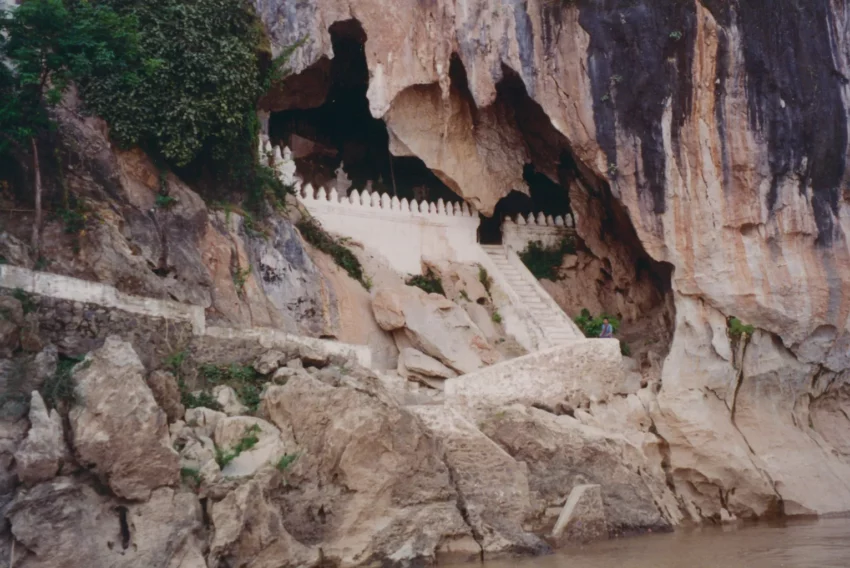The Pak Ou Caves are a historical marvel located in Laos, near the town of Luang Prabang. These caves are renowned for housing thousands of Buddha statues of varying sizes and styles. Carved into a limestone cliff at the confluence of the Mekong and Ou rivers, the caves have been a site of spiritual significance for centuries. They consist of two main caves, the lower Tham Ting and the upper Tham Theung, both serving as shrines to the river spirit and Lord Buddha. Pilgrims and tourists alike visit the Pak Ou Caves, drawn by their historical, cultural, and spiritual allure.
Get your dose of History via Email
Historical Background of Pak Ou Caves
The Pak Ou Caves have a rich history that dates back thousands of years. Local legend suggests that the caves were discovered by a local king who deemed them a suitable place for worship. The exact date of discovery remains unknown, but evidence suggests that the caves have been in use since the 16th century. The caves became a significant religious site during the reign of King Setthathirath of the Lan Xang Kingdom. He moved the capital to Luang Prabang and promoted Buddhism, leading to the caves’ association with the religion.
The caves have seen continuous use as a place of worship since their association with Buddhism. They have been a pilgrimage site for locals who would bring Buddha statues as offerings. Over time, thousands of statues accumulated, creating the impressive collection seen today. The statues vary in size, style, and age, reflecting the diverse history of the region and its artistic evolution.
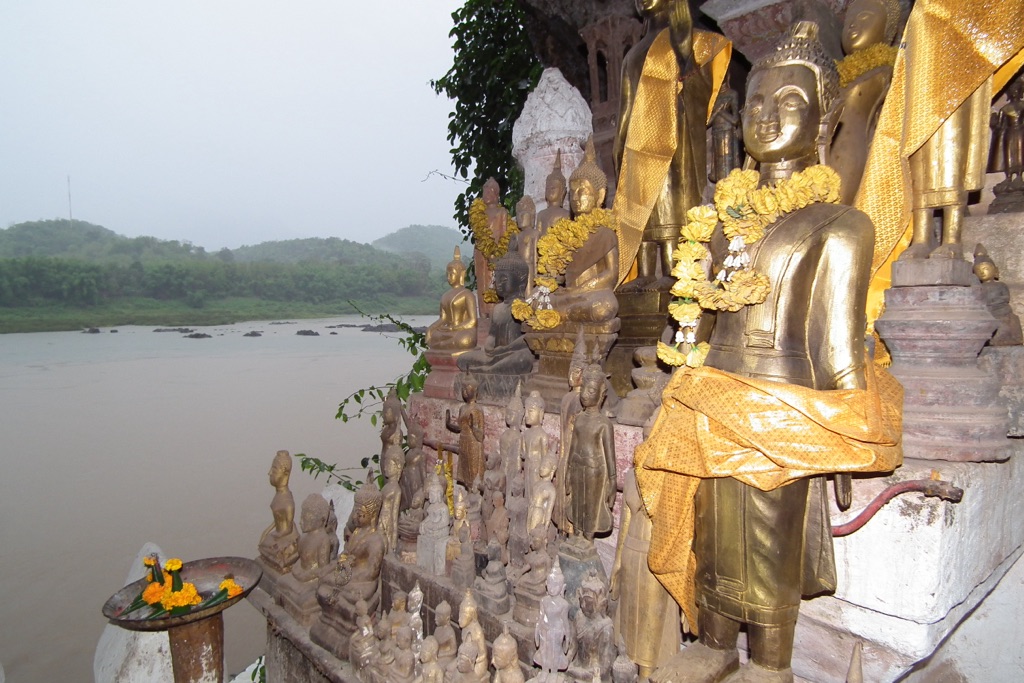
While primarily a religious site, the Pak Ou Caves have also played a role in local politics and history. During times of conflict, the caves provided refuge for locals, including during the 19th-century invasions by the Chinese Haw. The caves’ strategic location overlooking the Mekong River made them a valuable lookout point.
The French colonial period brought increased attention to the caves from the outside world. French explorers and travelers documented the caves, contributing to their international recognition. Despite this, the caves remained a local spiritual site, with the local community continuing to maintain and use them for religious purposes.
In recent years, the Pak Ou Caves have become a popular tourist destination. This has led to conservation efforts to preserve the statues and the caves themselves. The site remains an active religious location, with annual festivals and continued pilgrimages, ensuring that the spiritual tradition associated with the caves endures.
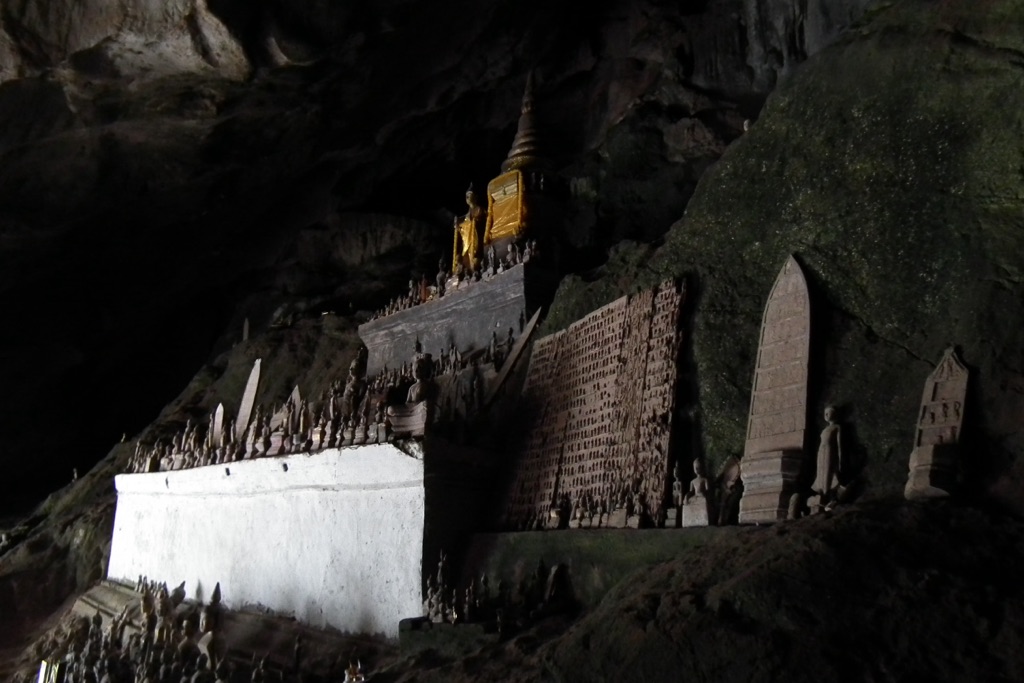
About Pak Ou Caves
The Pak Ou Caves are a complex of two main caves carved into a limestone cliff at the point where the Mekong and Ou rivers meet. The lower cave, Tham Ting, is easily accessible and contains hundreds of Buddha statues. The upper cave, Tham Theung, is deeper and darker, requiring visitors to climb a series of stairs to reach it. This cave houses more statues, some hidden in its recesses.
The statues within the Pak Ou Caves are made from various materials, including wood, stone, and bronze. They depict Buddha in numerous poses, representing different teachings and moments in his life. The collection’s diversity showcases the artistic heritage of the region, with influences from the Lan Xang Kingdom to the modern day.
The caves themselves are natural formations, with the limestone providing a stable environment for the statues. Over the centuries, the caves have been enlarged and modified by human hands to better serve as places of worship. The natural beauty of the caves, combined with the spiritual atmosphere, creates a serene environment.
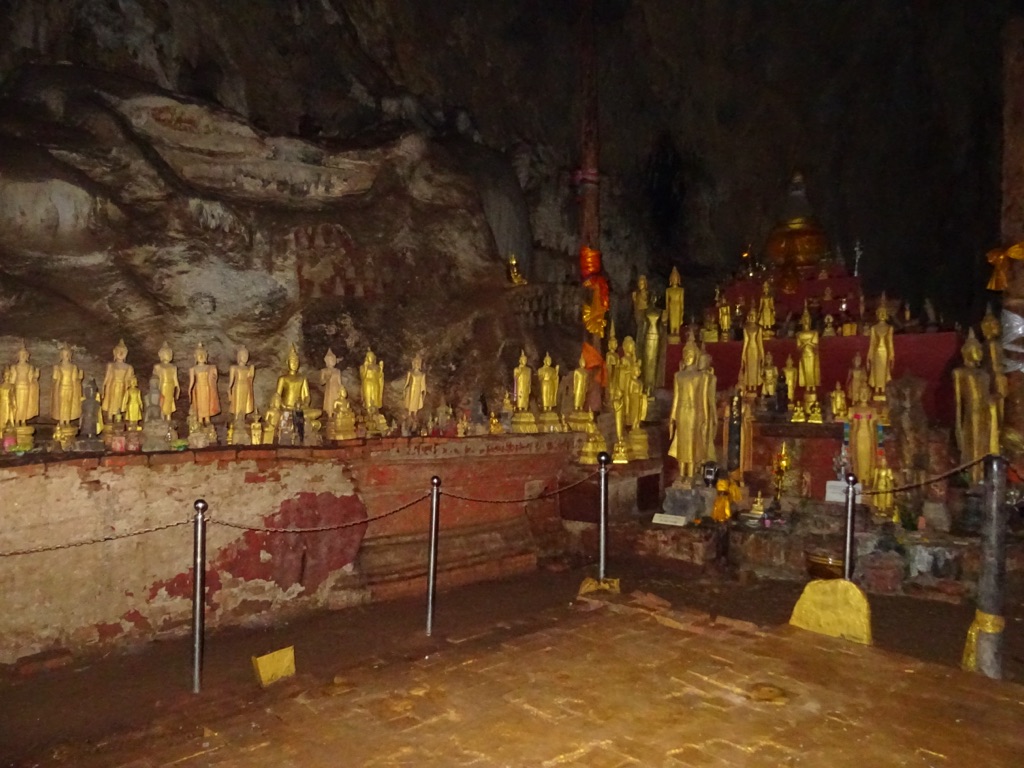
Architectural highlights of the Pak Ou Caves include the intricate arrangement of the statues and the way natural light filters through the cave openings, illuminating the figures. The caves’ interiors are simple, with the focus remaining on the statues and the act of worship. The natural rock formations within the caves also add to the aesthetic and spiritual ambiance.
The Pak Ou Caves’ location has made them a significant stop for river travelers for centuries. The convergence of the two rivers at this point has also given the site a symbolic meaning, representing the confluence of the spiritual and the earthly, a theme prevalent in Lao Buddhism.
Theories and Interpretations
Some theories suggest that the caves were originally used for animist worship before Buddhism became prevalent in the region. This is supported by the caves’ dedication to the river spirit, a belief that predates Buddhism. The transition to Buddhist worship likely occurred gradually, with the caves retaining elements of their animist past.
The mystery surrounding the sheer number of statues and their donors adds to the site’s intrigue. While many statues were likely brought by pilgrims, some may have been placed there by local rulers or wealthy patrons as acts of merit-making. The varying styles of the statues suggest contributions over a long period, reflecting changes in artistic trends and religious interpretation.
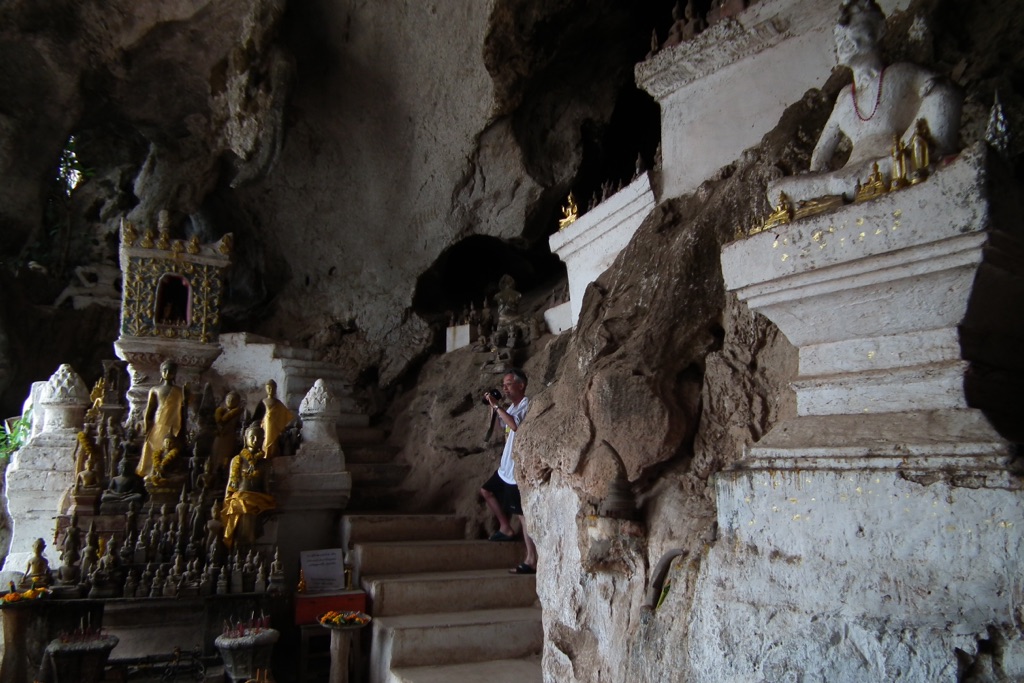
Dating the statues and the use of the caves has been challenging. While some statues can be dated based on stylistic elements, others are more difficult to place. Carbon dating and other scientific methods have been used to estimate the age of some statues, but the results are not definitive for the entire collection.
Interpretations of the caves’ significance have evolved over time. While initially a local religious site, the Pak Ou Caves have become symbols of Lao cultural resilience and continuity. They represent the blending of religious traditions and the importance of Buddhism in Lao society.
At a glance
Country: Laos
Civilization: Lan Xang Kingdom
Age: Use since the 16th century AD
Sources
– Wikipedia: https://en.wikipedia.org/wiki/Pak_Ou_Caves

